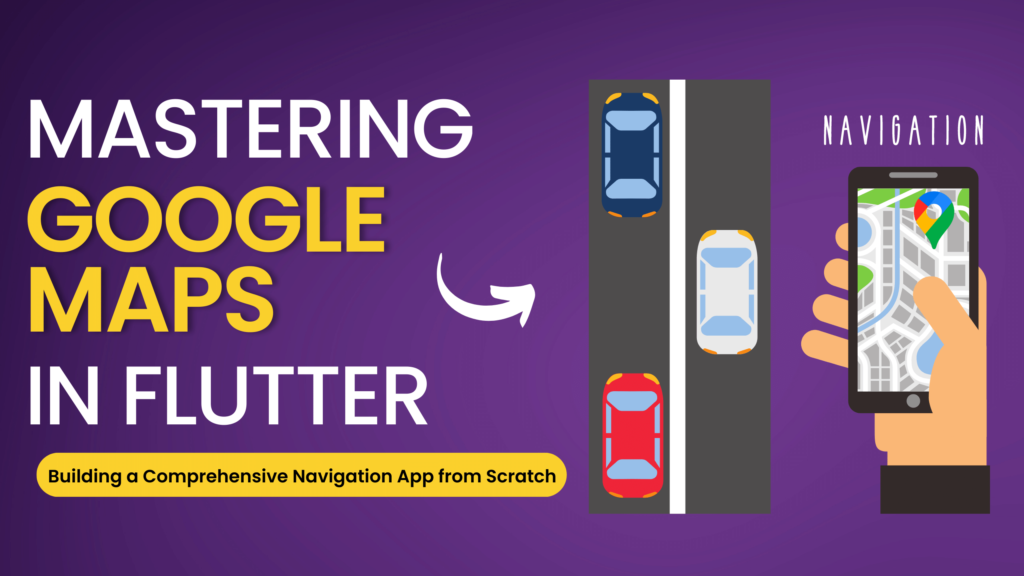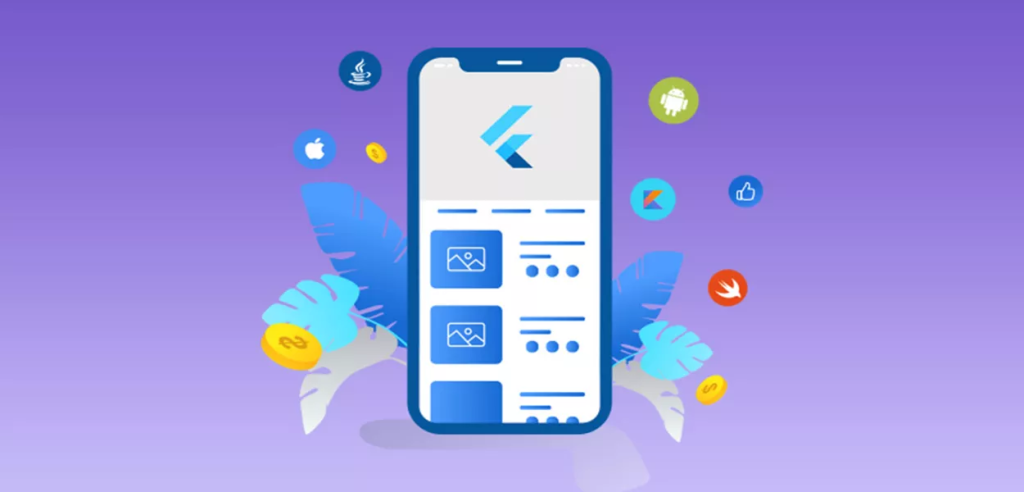App performance is a critical factor in the success of mobile applications. In the world of Flutter app development, where the goal is to deliver smooth, fast, and reliable experiences across platforms, caching emerges as a pivotal technique to enhance performance and user satisfaction. This section explores the importance of app performance, the role of caching in achieving it, and an overview of how caching can be leveraged within Flutter apps.
Importance of App Performance
App performance directly influences user perception, engagement, and retention. Users expect apps to be responsive, quick to load, and free from lag or stutter, regardless of the device or network conditions. High-performing apps contribute to a positive user experience, leading to higher satisfaction rates, increased usage, and better overall app ratings. Conversely, poor performance can lead to frustration, negative reviews, and ultimately, user churn.
Role of Caching in Enhancing User Experience
Caching is the process of storing copies of files or data in a temporary storage location (cache) to facilitate faster access on subsequent requests. In the context of mobile apps, caching can significantly enhance the user experience by:
- Reducing Load Times: Caching frequently accessed data on the device reduces the need to fetch data from the network or a remote database, leading to faster load times and a smoother user experience.
- Improving Offline Accessibility: With cached data, apps can remain functional and provide valuable content even in the absence of an internet connection, which is crucial for maintaining user engagement.
- Minimizing Network Usage: By reducing the number of network requests, caching helps conserve users’ data plans and reduce latency, especially in areas with poor network connectivity.
Caching in Flutter App Development
Flutter provides various mechanisms and tools for implementing caching, catering to different types of data and caching needs. Developers can choose from memory caching, disk caching, and network caching based on their app’s requirements and user scenarios. Proper caching in Flutter can lead to:
- Enhanced Performance: By efficiently managing cached data, Flutter apps can achieve quicker interactions and transitions, providing a seamless experience.
- Resource Optimization: Caching helps optimize the use of system resources, ensuring that the app performs well even on devices with limited capabilities or in constrained environments.
- Scalability: Effective caching strategies support the scalability of Flutter apps, allowing them to handle increased loads and user growth without compromising performance.
Understanding Caching in Flutter
Caching is a key concept in mobile app development that significantly impacts performance and user experience. In Flutter, understanding and implementing caching correctly can lead to more efficient apps that provide a seamless experience for users. Here’s an exploration of the fundamentals of caching and its various types in Flutter.
What is Caching?
Caching is the process of storing data in a temporary storage area, known as a cache, so that future requests for that data can be served faster. When an app accesses data from the cache, it reduces the need to fetch data from a slower source like a remote server or a database, thereby speeding up the response time.
Why is Caching Crucial for Mobile Apps?
- Performance Enhancement:
- Caching frequently requested data on the device minimizes the app’s reliance on network calls, leading to faster data retrieval and a smoother user experience.
- Bandwidth Conservation:
- By reducing the number of network requests, caching helps conserve bandwidth and reduce network costs, both for the developer and the user.
- Offline Availability:
- Caching enables key features of the app to remain accessible even when offline, which is essential for maintaining functionality and user engagement in areas with poor or no internet connectivity.
- Resource Optimization:
- Effective caching strategies can optimize the use of device resources, preventing redundant data processing and storage operations, and thereby enhancing the overall efficiency of the app.
Types of Caching in Flutter
- Memory Caching:
- Involves storing data in the device’s RAM for quick access. It’s the fastest type of caching but is temporary and limited by the device’s memory capacity.
- Flutter uses memory caching for assets like images and data objects frequently accessed by the app.
- Disk Caching:
- Disk caching refers to storing data on the device’s permanent storage (like SSD or HDD). It’s slower than memory caching but provides long-term storage and can retain data between app sessions.
- Common disk caching implementations in Flutter include using packages like
shared_preferencesfor simple data,hivefor lightweight and fast key-value storage, orsqflitefor more complex relational data storage.
- Network Caching:
- Network caching involves storing copies of network request responses, like API call results, so that subsequent requests for the same data can be served from the cache rather than re-fetching from the server.
- In Flutter, network caching can be implemented with HTTP caching mechanisms or using libraries like
diowhich offer built-in caching capabilities.
By leveraging these different types of caching, Flutter developers can create apps that are not only fast and responsive but also efficient and reliable under various usage conditions. Proper caching strategy consideration and implementation are key to unlocking these benefits and enhancing the overall app performance.
Memory Caching in Flutter
Memory caching in Flutter involves temporarily storing data in the device’s RAM to facilitate quick access and improve app performance. Here’s how to implement memory caching and manage it effectively to enhance your app’s functionality.
Techniques for Implementing Memory Caching
- In-Memory Data Structures:
- Utilize Dart’s built-in data structures like maps and lists to hold cached data directly in memory. This is suitable for small datasets that are frequently accessed and updated.
- Caching Libraries:
- Consider using caching libraries like
flutter_cache_managerorcached_network_imagefor more sophisticated memory caching needs. These libraries can manage the downloading, caching, and displaying of network images or data efficiently.
- Custom Caching Mechanisms:
- For specific caching requirements, develop custom caching solutions that fit your app’s architecture and data flow, leveraging Flutter’s and Dart’s programming constructs.
Best Practices for Managing Memory Cache
- Limit Cache Size:
- Define limits for your cache size to prevent excessive memory usage which can lead to app crashes or slowdowns. Implement eviction policies to remove old or least-used data from the cache when limits are reached.
- Cache Relevant Data Only:
- Cache only the data that benefits from quick access. Not all data needs to be cached, especially if it’s rarely accessed or too large.
- Use Cache Wisely:
- Be strategic about when to load data into the cache and when to clear it. For instance, cache data that will be reused across different parts of the app and clear the cache when the data is no longer needed or when the user ends the session.
- Implement Efficient Data Structures:
- Choose data structures that are efficient in terms of both access time and memory usage. Data structures like hashmaps can offer quick lookups for cached data.
- Monitor Memory Usage:
- Regularly monitor your app’s memory usage during development and testing. Tools like Flutter’s DevTools can help identify memory leaks and excessive caching.
- Handle Cache Lifecycle:
- Manage the lifecycle of your cached data in sync with the app’s lifecycle. Clear cache data appropriately when the app is closed or when certain conditions are met, to free up memory resources.
- Test Cache Performance:
- Test your caching logic under various conditions, including low memory scenarios, to ensure that the caching mechanism behaves as expected without adversely affecting the app’s performance.
By following these techniques and best practices, you can effectively implement and manage memory caching in your Flutter app. This not only enhances the app’s responsiveness but also ensures optimal performance and a better user experience.
Disk Caching Techniques in Flutter
Disk caching in Flutter involves storing data locally on the device’s persistent storage, allowing for offline access and quicker data retrieval compared to network fetching. Here’s how to implement disk caching in Flutter, along with an overview of the tools and libraries available for this purpose.
Implementing Disk Caching
- Define What to Cache:
- Determine the data types and contents that benefit most from disk caching, such as images, API responses, or user-generated content.
- Choose the Right Storage Location:
- Decide where to store cached data on the device, considering factors like data size, security requirements, and access frequency.
Tools and Libraries for Disk Caching in Flutter
- Hive:
- A lightweight, fast, and efficient NoSQL database that is easy to use for key-value storage. Hive is great for storing user settings, cached API data, and other small to medium-sized datasets.
- Features: Fast read/write operations, supports encryption, and does not require a schema.
- Shared Preferences:
- A simple key-value storage system ideal for storing small amounts of data, like user preferences or settings.
- Features: Easy to use for small, non-complex data types and integrates well with the Flutter lifecycle.
- SQLite (using sqflite package):
- A relational database solution for more complex data storage needs. Suitable for structured data storage, it supports SQL queries, transactions, and relational data modeling.
- Features: Robust data management, supports complex queries and relationships, and is highly scalable.
How to Implement Disk Caching
- Installation and Setup:
- Add the chosen library to your
pubspec.yamlfile and import it into your Flutter project. Initialize the library according to its documentation.
- Storing Data:
- For Hive or Shared Preferences, you can store data with simple key-value pairs. With SQLite, define your database schema and use SQL queries to insert and retrieve data.
- Retrieval and Updating Data:
- Access cached data through keys (for Hive and Shared Preferences) or queries (for SQLite). Implement logic to update or invalidate the cache as needed, based on data freshness or user actions.
- Managing Cache Lifecycle:
- Define clear rules for how long data stays in the cache and under what conditions it should be updated or cleared. This could be based on time, app usage patterns, or storage constraints.
Best Practices
- Data Synchronization:
- Ensure that your disk cache remains in sync with the latest data from the server or source, especially for dynamic data that changes frequently.
- Cache Invalidation:
- Implement a robust cache invalidation strategy to remove outdated or irrelevant data, thus avoiding serving stale data to the user.
- Security Considerations:
- For sensitive data, consider using encryption or secure storage solutions to protect the data stored on the device.
By utilizing these disk caching techniques and tools, you can significantly improve the performance and user experience of your Flutter app, providing fast data access and robust offline capabilities.
Network Caching Strategies in Flutter
Network caching is crucial for enhancing the responsiveness and efficiency of Flutter apps by reducing latency and network requests. It involves storing network request responses, such as API calls, so subsequent requests for the same data can be served from the cache. Here’s how to implement network caching in Flutter and integrate it with networking libraries.
Implementing Network Caching
- Caching API Responses:
- Store the responses from API calls in local storage or memory to reuse them for future requests. This is especially useful for data that doesn’t change frequently.
- Conditional GET Requests:
- Use HTTP headers like
ETagorLast-Modifiedto make conditional GET requests. The server will only send a full response if the data has changed, reducing network usage.
- Cache-Control Headers:
- Utilize
Cache-Controlheaders in HTTP responses to manage how responses are cached and for how long. This can help in implementing strategies like cache-first or network-first approaches.
Integration with Flutter’s Networking Libraries
- Flutter’s HTTP Client:
- The basic HTTP client in Flutter can be extended with caching functionality using interceptors or middleware to cache responses and manage the cache.
- Dio Package:
- Dio is a powerful HTTP client for Flutter that supports custom interceptors, making it easier to implement advanced network caching strategies.
- Example: Use Dio’s interceptors to check the cache before making a network request and to cache the response after the request completes.
- Retrofit for Flutter:
- Retrofit, when used with Flutter, simplifies network operations and can be configured to use caching mechanisms, often in combination with Dio for handling HTTP requests and responses.
Best Practices for Network Caching
- Selective Caching:
- Not all network responses need to be cached. Be selective in what you cache, focusing on data that is less likely to change and is frequently requested.
- Cache Expiry and Invalidation:
- Implement a cache expiration strategy to ensure that cached data is refreshed at appropriate intervals. Invalidate cache entries when data is updated or when they become stale.
- Synchronization with Offline Data:
- Ensure that network caching works well with your app’s offline capabilities. Cached data should seamlessly synchronize with offline data storage for a consistent user experience.
- Handling Cache Misses:
- Design your app to handle cache misses gracefully, where the app can still fetch data from the network if it’s not available in the cache.
- Monitoring and Optimization:
- Regularly monitor the effectiveness of your caching strategy and make adjustments as needed. Analyze cache hit rates, load times, and network usage to optimize the caching logic.
By effectively implementing network caching strategies and integrating them with Flutter’s networking libraries, you can significantly reduce network requests, decrease latency, and provide a smoother and more responsive user experience in your Flutter apps.
Advanced Caching Patterns in Flutter
Implementing advanced caching patterns in Flutter apps can significantly enhance performance and user experience by optimizing data retrieval processes. These patterns can be customized to fit specific app needs and user behaviors. Here’s an overview of some advanced caching strategies and how to implement them.
Cache-First Strategy
- Description:
The cache-first strategy prioritizes fetching data from the cache. If the requested data is not in the cache or is stale, then the network is used. - Implementation:
Implement logic in your Flutter app to first check the local cache for data. If the data exists and is considered fresh, use it. Otherwise, make a network request, update the cache with the new data, and then serve it.
Network-First Strategy
- Description:
The network-first strategy attempts to fetch data from the network initially. If the network is unavailable or the request fails, the cache is used as a fallback. - Implementation:
First attempt to fetch data through a network request. If the request is successful, update the cache with the new data. If the request fails, retrieve the data from the cache if available.
Stale-While-Revalidate Strategy
- Description:
This strategy immediately returns the cached data (stale), while in the background, a network request is made to update the cache (revalidate) for future use. - Implementation:
Serve data from the cache to the user for an immediate response, then asynchronously fetch the latest data from the network. Once fetched, update the cache and optionally refresh the UI if still relevant.
Cache Eviction Strategies
- Description:
Cache eviction is about deciding which data to remove from the cache when it becomes full or the data becomes stale. - Implementation:
Define rules for evicting data, such as Least Recently Used (LRU), where the least accessed data is removed first, or Time to Live (TTL), where data expires after a certain period.
Customizing Caching Logic
- Analyzing Usage Patterns:
Analyze user interaction and data access patterns to determine which caching strategy best suits different parts of your app. - Dynamic Caching Levels:
Implement dynamic caching that adjusts based on user behavior, app state, and network availability, optimizing data retrieval and storage processes. - User-Centric Caching:
Tailor caching mechanisms to user preferences and behaviors, caching data that is most relevant to the individual user to enhance the personalized experience.
Best Practices
- Testing and Validation:
Rigorously test caching logic under various scenarios to ensure it behaves as expected and effectively improves app performance. - Monitoring and Analytics:
Use monitoring tools to track cache hit rates, load times, and network usage to continuously optimize the caching strategy. - Scalability and Flexibility:
Design caching mechanisms to be scalable and flexible, allowing for easy updates and adjustments as the app evolves and user needs change.
By leveraging these advanced caching patterns and customizing the caching logic to fit specific app needs and user behaviors, Flutter developers can create more efficient, reliable, and user-friendly applications.
Monitoring and Optimizing Cache Performance in Flutter
Effective cache management is crucial for maintaining high performance in Flutter apps. Monitoring cache performance and optimizing its configuration can lead to significant improvements in app responsiveness and user experience. Here’s how to approach these tasks.
Monitoring Cache Performance
- Analytics and Monitoring Tools:
- Utilize tools like Firebase Performance Monitoring or custom logging mechanisms to track cache hit rates, response times, and cache-related errors.
- User Behavior Analysis:
- Analyze user interaction data to understand how caching affects app usage patterns. Tools like Google Analytics can help identify whether cached content is positively impacting user experience.
- Performance Benchmarks:
- Set performance benchmarks for cache operations. Regularly measure and compare actual performance against these benchmarks to identify areas for improvement.
- Resource Usage Monitoring:
- Monitor the app’s resource usage, including memory and storage, to ensure that caching does not lead to resource contention or app slowdowns.
Optimizing Cache Performance
- Cache Expiration and TTL (Time-To-Live):
- Define appropriate expiration times for cached data to ensure users receive up-to-date content while minimizing unnecessary network requests.
- Cache Size Limits:
- Set size limits for the cache to prevent excessive storage usage. Implement cache eviction policies like LRU (Least Recently Used) to remove old or less frequently accessed data.
- Refresh Strategies:
- Determine when and how cached data should be refreshed. For instance, consider implementing background refresh strategies that update the cache without disrupting the user experience.
- Dynamic Caching:
- Implement dynamic caching based on user behavior and network conditions. For example, increase caching during periods of poor network connectivity or for users who frequently access certain data.
- Content Optimization:
- Optimize the content being cached by compressing data or using efficient serialization formats to reduce the cache footprint and speed up loading times.
Best Practices for Cache Performance
- Regular Testing and Updates:
- Regularly test the caching mechanism to ensure it works as intended, especially after app updates or changes in the data structure.
- User-Centric Optimization:
- Tailor caching strategies to enhance the user experience, focusing on caching content that provides the most value to the user.
- Scalable Caching Solutions:
- Ensure your caching solution is scalable to handle increased load as your user base grows, without degrading performance.
- Security Considerations:
- Keep security in mind, especially when caching sensitive data. Implement encryption and secure access policies to protect cached data.
By carefully monitoring and optimizing cache performance, developers can ensure that their Flutter apps remain fast, responsive, and efficient, providing an enhanced user experience and maintaining high performance standards.
Real-World Examples and Case Studies of Advanced Caching Techniques in Flutter Apps
Implementing advanced caching techniques in Flutter apps can significantly enhance performance and user experience. Here are some real-world examples and case studies that highlight the successful implementation of these techniques and the lessons learned from them.
Case Study 1: E-Commerce App with Disk Caching
- Overview:
A popular e-commerce Flutter app implemented disk caching to store product images and details locally, reducing load times and enabling offline browsing. - Implementation:
The app used the Hive database for efficient disk caching of product details and integrated thecached_network_imagepackage for image caching. - Outcome:
The app saw a notable decrease in network requests, faster product listing loading times, and improved user satisfaction, especially in areas with slow network connectivity. - Lessons Learned:
- Effective disk caching significantly reduces dependency on network speed and availability.
- Users appreciate the seamless experience provided by immediate access to cached data.
Case Study 2: News App with Network Caching
- Overview:
A news application used network caching to store articles and news content fetched from the server, ensuring quick access and reducing data usage. - Implementation:
The app implemented network caching using theDioHTTP client with custom caching interceptors to manage cached responses. - Outcome:
Improved app responsiveness with instant access to news articles, leading to an increase in daily active users and longer in-app session durations. - Lessons Learned:
- Network caching is vital for content-heavy apps to ensure fast content delivery.
- Regularly updating the cache and having a fallback mechanism for cache misses are crucial for maintaining content freshness and reliability.
Case Study 3: Fitness App with Memory Caching
- Overview:
A fitness application utilized memory caching to store workout routines, user progress, and multimedia content to enhance the user interface responsiveness. - Implementation:
In-memory caches were strategically used to preload and quickly render frequently accessed data, reducing wait times during workout sessions. - Outcome:
The app experienced a performance boost with smoother transitions and less waiting time for content loading, which was particularly appreciated during live workout sessions. - Lessons Learned:
- Memory caching can dramatically improve the user experience in real-time use cases.
- Managing cache size and lifecycle is essential to prevent memory bloat and ensure the app remains responsive.
These case studies demonstrate the transformative potential of advanced caching techniques in Flutter apps across various sectors. Key lessons include the importance of choosing the right caching strategy based on the app’s content and user needs, the need for a balanced approach to cache management to prevent resource overuse, and the ongoing benefits of continuous performance monitoring and optimization. By learning from these real-world implementations, Flutter developers can better understand how to effectively leverage caching to enhance app performance and user satisfaction.
Conclusion
In conclusion, the strategic implementation of advanced caching techniques in Flutter apps plays a crucial role in enhancing performance, improving user experience, and ensuring efficient use of resources. The real-world case studies discussed illustrate the significant benefits of incorporating memory, disk, and network caching strategies, highlighting their impact on reducing load times, conserving bandwidth, and providing seamless user interactions, even in offline scenarios.
Key takeaways from these examples emphasize the importance of selecting the appropriate caching strategy tailored to the app’s specific needs and user behavior patterns. Developers should focus on optimizing cache performance through regular monitoring, setting appropriate cache expiration policies, and ensuring that cached data remains secure and up to date.
The lessons learned from successful caching implementations underline the need for a balanced and thoughtful approach to caching, where the benefits of speed and accessibility are harmonized with considerations of data freshness and resource management. By adopting these advanced caching techniques, Flutter developers can build apps that not only perform excellently but also deliver content efficiently and reliably, leading to enhanced user satisfaction and engagement.
As technology evolves and user expectations rise, the role of effective caching in app development will continue to grow. Flutter developers who master these caching strategies will be well-equipped to create high-performing, robust, and user-friendly apps that stand out in the competitive digital marketplace.





